
The Next Trillion Dollar Wave - AI Narrative in Crypto: Who Are the Top Players?
Dec 12, 2024 21:40
Blockchain games, once celebrated as the next frontier in gaming, have struggled to hold onto the spotlight. While many of these projects initially generated excitement, their popularity often peaked within a short period, and now the genre frequently faces skepticism.
One of the main issues plaguing blockchain games is their short lifespan. Many projects, from early blockchain games to newer click-to-earn titles, rose to popularity as soon as their tokens were listed, only to quickly decline. These games often became infamous for being fleeting and unengaging.
In contrast, there are games in the broader industry that demonstrate remarkable staying power. These titles have built loyal fanbases, evolving and iterating over the years. Their longevity presents a stark contrast to the blockchain gaming space, where short-lived projects seem to be the norm.
However, the question remains: Can a blockchain game break this trend and offer a long-term experience?
Many long-time gamers in the blockchain space, especially those who have grown up with classic RPGs, are searching for a game that delivers not only in terms of financial incentives but also gameplay. For these players, Seraph is emerging as a standout title.
Seraph launched its PTR test server on October 17, and early impressions have been promising. This Web3 game—now the preferred term for blockchain-based games—presents a potential turning point for blockchain gaming by offering players a legitimate reason to continue engaging with the space, even as the challenges of work and life increase.
What sets Seraph apart is its ability to blend traditional gaming mechanics with Web3 features in a way that feels organic. Players aren’t constantly pushed to buy tokens, chase financial rewards, or speculate on NFTs. Instead, the game allows for a more relaxed approach. Those who want to play for fun can do so, treating it as an extension of their gaming habits, while those looking to earn can still find value in the time they invest.
For players, this dual approach brings back the joy of gaming without the pressure. The game strikes a balance between fun and earning potential, making it feel like a rewarding experience. Seraph offers the possibility of earning as a bonus, not a necessity. Players can continue playing for the sake of the game itself, while any financial rewards feel like a pleasant surprise.
For those who are curious about how this game is developing and what aspects of its gameplay and rewards are worth paying attention to, Seraph might be a refreshing journey into blockchain gaming’s future.

For players who are busy and active in the crypto space, what exactly motivates them to try out a new Web3 game?
Motivations generally fall into two categories:
The non-gamer mindset: where players are solely focused on earning in-game rewards, with little regard for the gameplay itself.
The gamer mindset: where the game’s mechanics align with past gaming experiences, offering something familiar and worth exploring.
Convincing a player who still enjoys gaming but is part of the crypto world often hinges on the classic nature of a game’s mechanics.
New game categories often come with resistance—whether due to time constraints or learning curves. Therefore, offering a familiar and well-established gameplay style is a compelling way to attract a broader player base. Seraph capitalizes on this by presenting an established and reliable gameplay loop that has been refined over time—item looting.
Whether a player considers the gameplay classic isn’t the most important factor—the market and player base ultimately determine whether a game’s mechanics will stand the test of time. For decades, item looting has been a core gameplay feature that has consistently attracted dedicated players, and Seraph successfully implements this concept.
But what exactly is item looting in the context of Seraph?
It involves leveling up your character, consistently finding better loot, strengthening your abilities, and then taking on progressively more difficult challenges. The cycle repeats, and with each iteration, the rewards get better.
One of the key reasons why this repetitive gameplay remains so addictive is the sense of surprise. In item-looting games, you never know what your next reward will be. This curiosity and the unknown factor help counter the repetitive nature of the task, making each playthrough feel fresh and exciting.
Upon first entering Seraph, players will immediately notice the game’s strong design elements. The character models, user interface, and overall aesthetics create an experience that feels immersive and intuitive. The well-thought-out visual design and the straightforward gameplay systems offer players a sense of familiarity while introducing a fresh take on item looting.
In terms of gameplay mechanics, Seraph offers a mix of close-range and long-range combat styles, with a variety of character-building options. Players can quickly adapt by selecting their preferred character class and customizing their skills to fit their playstyle. As players embark on their adventures, they collect better loot along the way, making each new challenge more rewarding.
The game’s progression system feels intuitive as well. Early stages (from level 1 to 60) focus on introducing the game’s plot, allowing players to get familiar with character abilities and mechanics. After reaching level 60, the game transitions into a new phase where item looting becomes the central gameplay focus, enabling players to gather better gear and fully experience the core loot-farming loop.
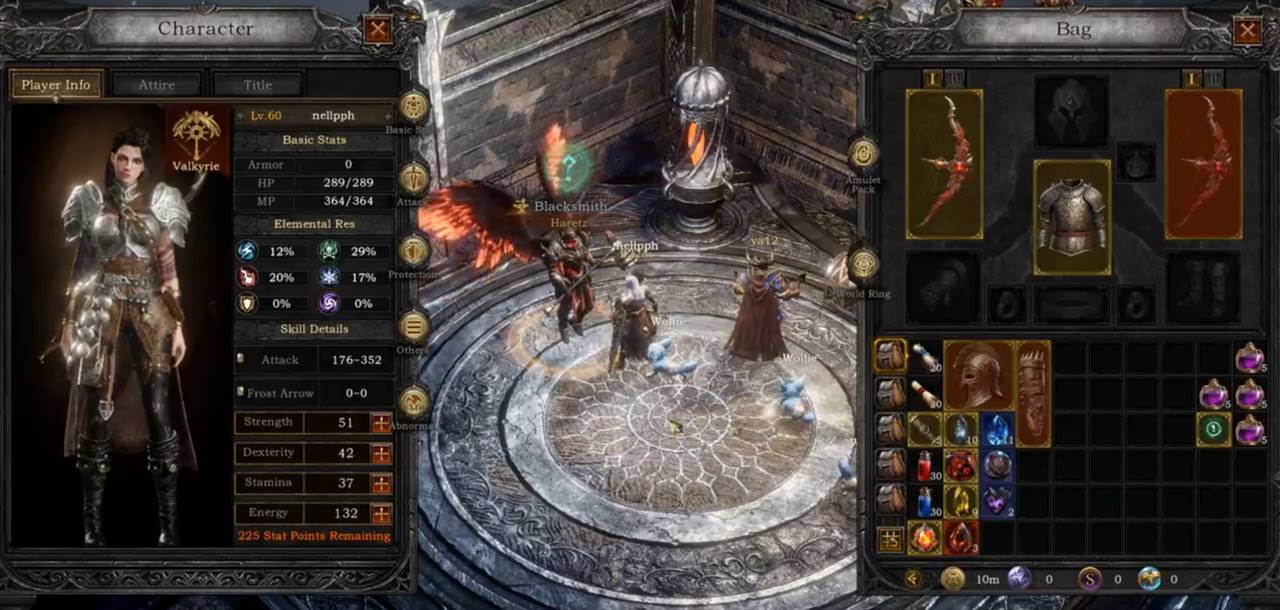
Seraph also incorporates a seasonal system, which adds a layer of excitement and freshness to the experience. Each season lasts between 4-5 weeks and introduces new equipment bonuses, unique items, and additional challenges. While the core mechanics stay consistent, changing seasons give players fresh ways to enjoy the item-looting gameplay.
What’s particularly innovative about Seraph is its approach to the seasonal reset. While traditional games often start each season from scratch, Seraph uses a semi-reset system. Key features—like NFTs and specific paid upgrades—are retained across seasons, ensuring players don’t lose all of their progress. This approach complements the item-looting style and optimizes the game’s Web3-based economy, giving players an ongoing sense of progress with each seasonal refresh.
In summary, Seraph's core gameplay revolves around building characters, finding rare loot, and navigating through seasons that refresh the experience with new themes and rewards.
So why is this gameplay so engaging?
The first reason is the element of surprise.
In the later stages of the game, item looting remains unpredictable. Each map in Seraph has unique characteristics, and each visit introduces different challenges and rewards. This mix creates a continuous sense of surprise, as players never know what they might encounter on their next run.
The second reason is the sense of growth.
Item looting in Seraph requires strategic character building. Players must carefully choose skill and equipment combinations to maximize effectiveness. This progression, from “I’m not strong enough” to “I can now overcome this challenge,” provides satisfying feedback and keeps players engaged in strengthening their characters.
Throughout the game, players will notice well-designed mechanics that feel familiar to anyone who has played traditional action RPGs. For those used to similar Web2 games, Seraph is easy to pick up and doesn’t require a steep learning curve.
At this point, Seraph has launched its PTR test season, allowing anyone to experience the game firsthand. Supporting both PC and Android platforms, Seraph is accessible to a wide audience. The game has already achieved impressive metrics, ranking third among active applications on the BNB Chain consistently and securing first place in the gaming category. It has attracted over 1.5 million on-chain users and boasts more than 1 million active wallets in the last 30 days.
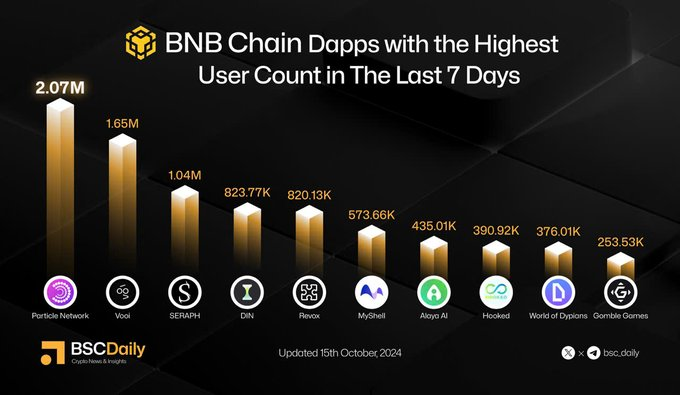
On the technical side, Seraph simplifies the login and asset management process through its ActPass system. Players can log in with just their email, eliminating the need for complex crypto wallet setups or private key management. The game also features a built-in MPC wallet, creating a seamless experience where gameplay takes place within Seraph, while assets and transactions are managed through ActPass. This combination of main game and integrated system provides players with a smooth, streamlined experience.
With item looting becoming a game of endless growth and surprise, why not give it a try?
When it comes to Play-to-Earn (P2E) farming, most crypto players have grown weary of the concept.
But what lies at the root of this exhaustion and disappointment? The answer is simple: thematic inconsistency.
Many current Web3 games lack cohesion between their core gameplay and P2E farming mechanics. In most cases, P2E farming feels like an add-on, disconnected from the main gameplay loop. If the P2E component were removed, the experience would largely remain the same, making it feel irrelevant to the game’s core design.
This disconnection is something that players can quickly sense. When a game is created purely for P2E farming, it often feels like little more than a superficial shell. The underlying game becomes secondary, causing players to lose interest over time.
A game’s value lies in its ability to offer interactive experiences, engage players emotionally, and draw them into its world. Games should not feel like empty vessels built solely for profit. In unengaging games, P2E farming feels forced and quickly becomes monotonous.
But what if there were a game where P2E farming was not just an add-on, but a core, self-contained element of the gameplay? What if the entire game premise was built around earning in a way that felt consistent with the game’s themes?
Seraph offers a rare example where the disconnect between gameplay and P2E farming is resolved.
When viewed as a whole, item looting and gear progression are integral to Seraph’s mechanics. The very act of leveling up and improving your character is a form of P2E farming. The difference is that in Seraph, the rewards and gear you obtain are directly tied to the blockchain, adding an extra layer of value.
The progression in Seraph feels satisfying because every aspect of the game, from character development to item collection, is designed to enhance the overall experience. The process of collecting rare loot and upgrading your character has long been a core theme in many RPG games, and Seraph builds upon this by adding blockchain elements.
As players gather more powerful items, the transition from off-chain assets to on-chain NFTs feels natural, rather than intrusive. The blockchain component enhances the rarity, satisfaction, and trading opportunities of the items players acquire, rather than detracting from the gameplay.
Even without NFTs, traditional games often feature trading markets and systems where players can exchange valuable items. The core structure of these games supports P2E farming as an integral part of the experience. In Seraph, this is taken one step further by incorporating blockchain technology to make in-game assets tradable, adding value without disrupting the game’s flow.
The P2E farming process in Seraph is structured to guide players through different stages of progression. From familiarizing yourself with the game mechanics to obtaining entry tickets and calculating the input-output ratio, each step is thoughtfully designed.
In the early stages of the game (levels 1-60), players focus on regular gameplay. This involves leveling up, gaining experience, and learning how the game’s mechanics work. During this time, players can earn equipment and in-game gold, though none of this is tied to NFTs or blockchain assets. This phase serves as an introduction to the game’s systems, allowing players to get comfortable before diving into the P2E farming aspect.
Once players reach level 60, they are able to participate in high-level n P2E farming. While it’s not mandatory, choosing not to farm means missing out on the core content of the game. For those who do choose to farm, they must first acquire entry tickets in the form of equipment and resources.
To participate in P2E farming, players need to obtain a piece of NFT Equipment that acts as an entry ticket for high-level farming. These NFTs can be purchased through the ActPass NFT marketplace, representing the initial cost for entering the P2E farming economy.
Players also need to collect Soul Spars, consumable resources within the game. Equipped with NFT Equipment, players can complete specific challenges to earn Soul Spars. The concept of "value as the condensation of labor" applies here—since players invest time and effort to earn Soul Spars, the value of the resulting rewards is justified.
Once players have acquired the necessary entry tickets, the P2E farming in Seraph begins. Here’s a simplified breakdown:
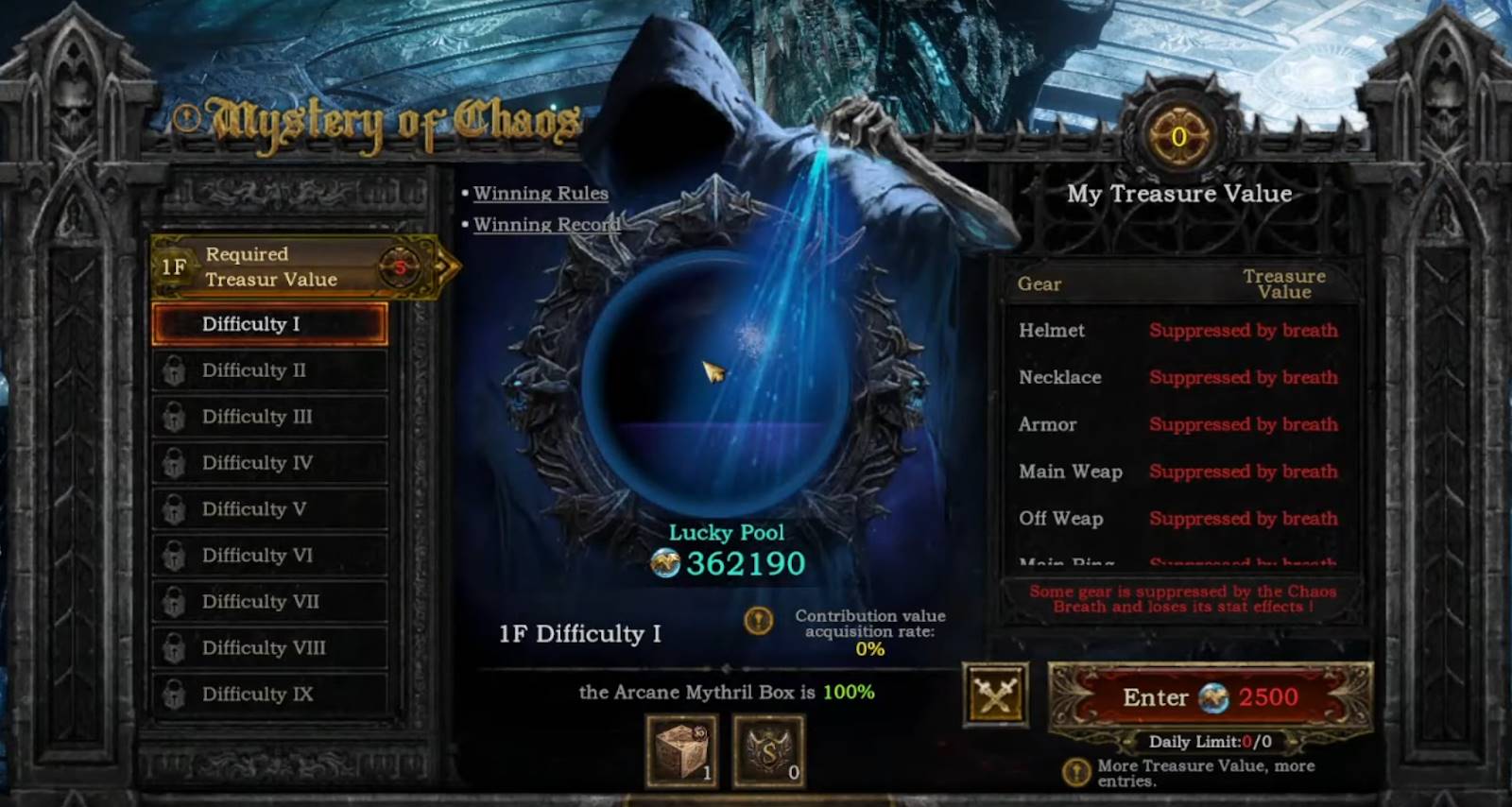
The core gameplay loop of Seraph revolves around continuously improving your character by collecting better equipment, which then enables you to tackle even more difficult challenges. As the demand for powerful items increases, players can either sell their equipment for profit or use it to strengthen their characters and enhance their P2E farming potential.
Although the specifics of equipment utility, market prices, and the risk-and-reward ratio are beyond the scope of this overview, Seraph clearly offers a well-designed system for players who want to dive deeper into P2E farming.
After experiencing both the P2E farming and non-P2E farming aspects of Seraph, it becomes clear that this game provides a blockchain version of the traditional item-looting experience. The combination of fast-paced gameplay, the thrill of finding rare items, and the potential to earn through blockchain assets makes Seraph a standout title in the Web3 space.
Players looking to farm the best items will need to follow the P2E farming route, with NFT-based equipment offering valuable attribute boosts. The continuous loop of hunting for better gear and replaying for rewards aligns perfectly with the core gameplay, making Seraph a rewarding experience for item-looting fans.
However, it’s worth noting that P2E farming requires careful consideration of the risk-and-reward ratio. The price of the NFT Equipment is higher compared to traditional Web2 games, so players will need to weigh their investments carefully.
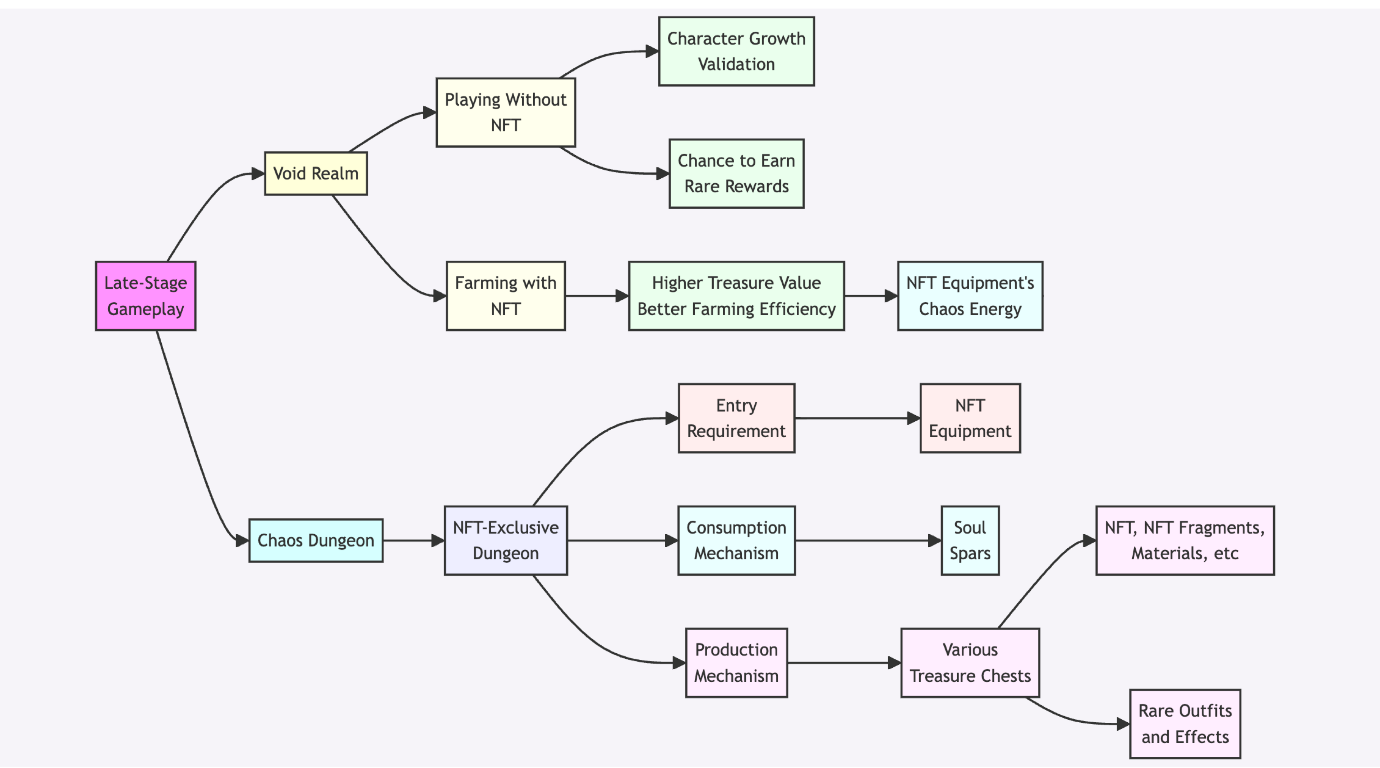
Seraph’s PTR test launched on October 17, and interested players can now download the game to participate. This season is open to all players, making it an excellent opportunity for newcomers to get involved.
Additionally, the official Season1 (S1) is set to launch after the PTR test ends. Typically, the PTR season acts as a low-cost way for players to practice and get familiar with the game’s P2E farming mechanics and rules. By using the free NFT Equipment currently being distributed, players can learn the ropes and avoid mistakes when the official season begins.
To play the game, players will need an activation code at the official website. Seraph releases 600 activation codes daily, available by email reservation. Once a player’s reservation is confirmed, they’ll receive an activation code to access the game.
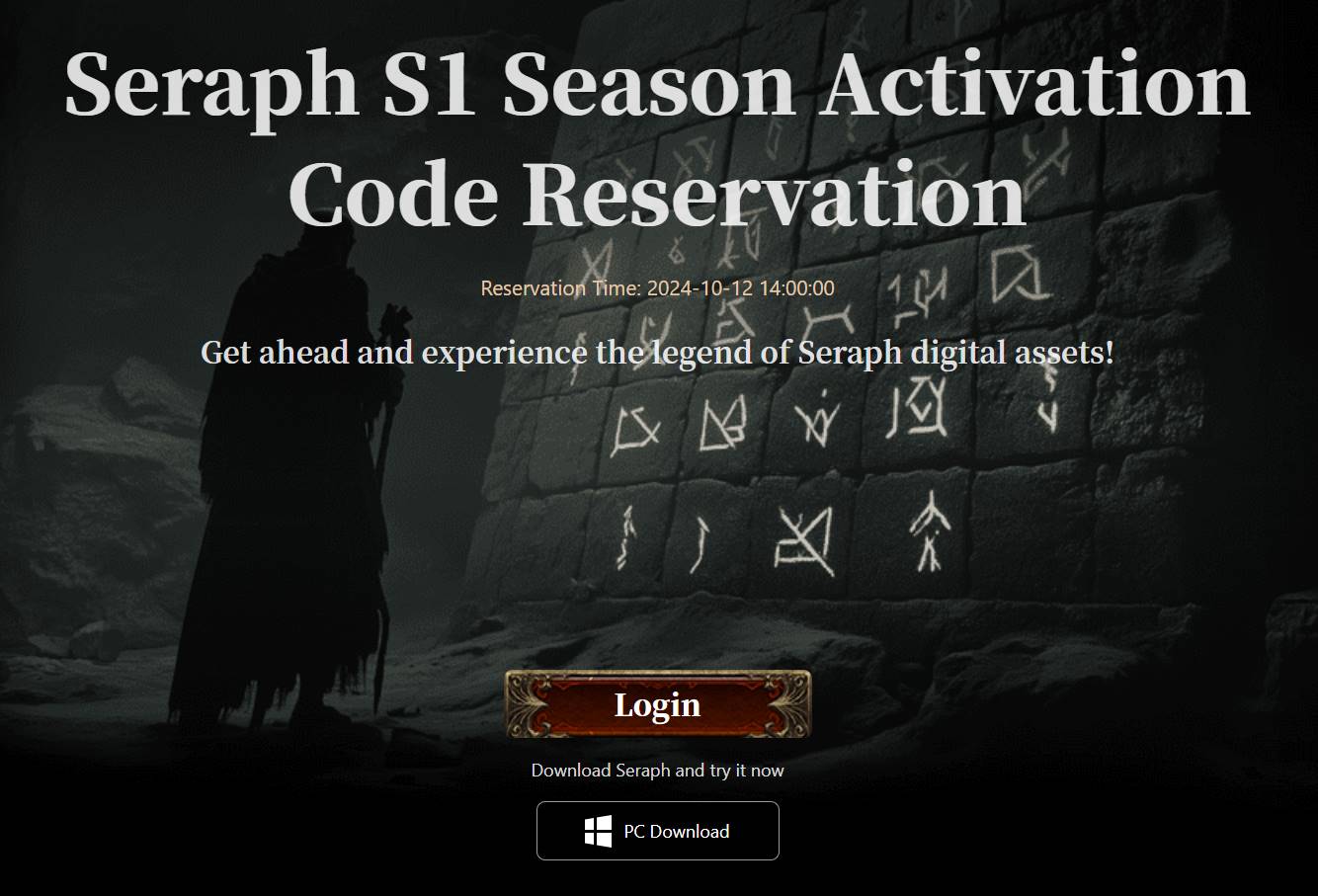
In terms of airdrops and token expectations, although Seraph has yet to announce the date of its TGE, the RUSH Season1 event is running concurrently with the PTR test. Players can complete tasks to earn event points, which they can use to enter a lottery and win Feather NFTs.
These Feather NFTs can eventually be exchanged for $SERAPH tokens when it officially launches. Players can win Feather NFT treasure chests through the event page’s point-based lottery system. Players can choose to either trade them or hold on to them for future token airdrop rewards. All activities are managed through the ActPass wallet, which handles both assets and transactions for the game.
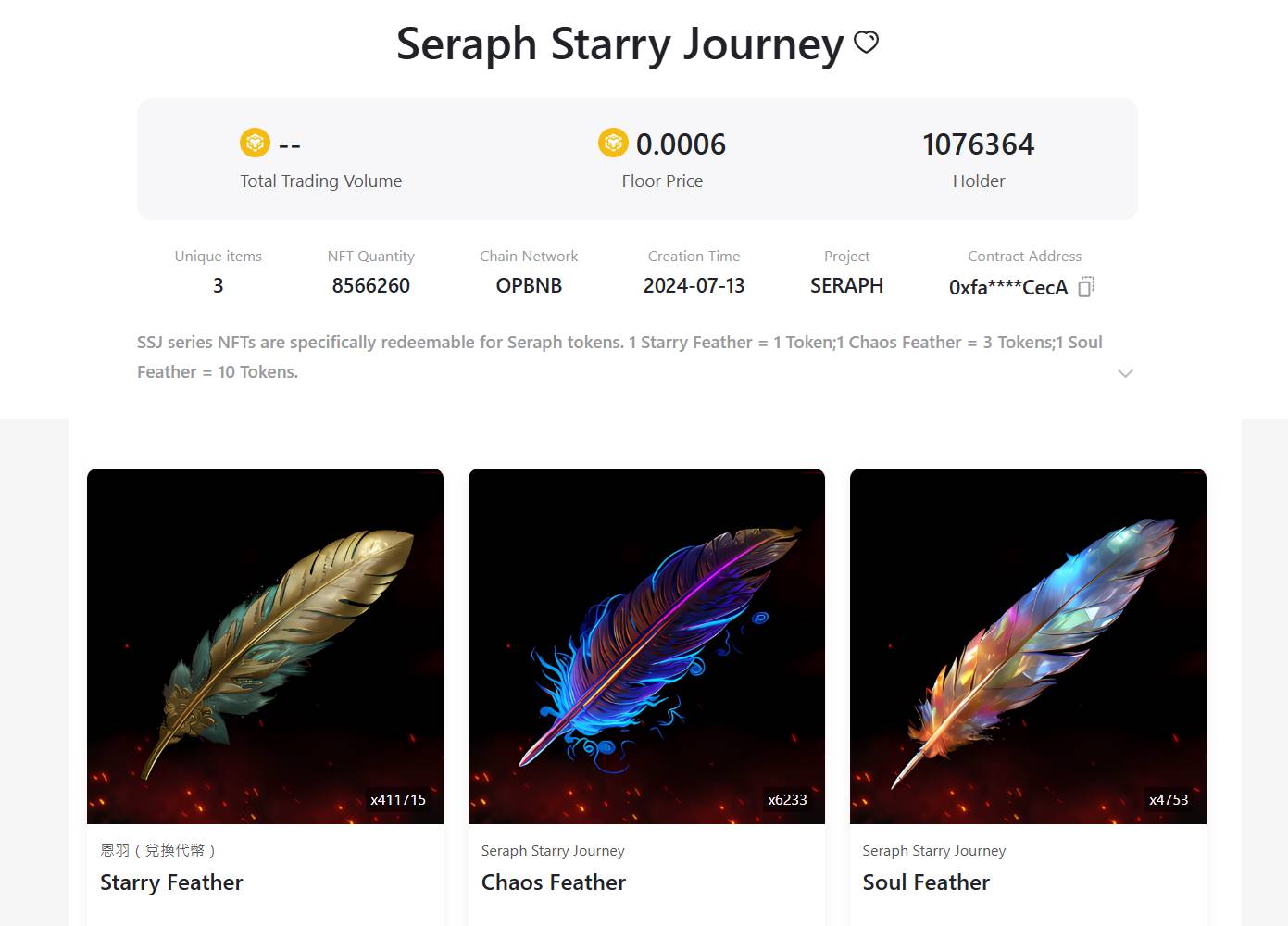
Finally, in today’s market, where meme coins and quick-to-fade mini-games dominate, discussing blockchain games may seem somewhat out of place.
In this wave of growth, many have already seen countless meme tokens or meme-like mini-games that peak when listed and are quickly forgotten after airdrops. Often, these projects exist solely to create a hype cycle that benefits early participants, leaving nothing sustainable behind.
In contrast to these trends, the focus on gameplay and long-term playability has become a rarity in the blockchain space.
Games are a mature form of entertainment and should deliver joy to those investing their time. The current trend of mini-games doesn’t align with what games were originally designed for—interactive, engaging, and emotionally rewarding experiences.
Blockchain games, as entertainment products, need outliers—games that stand out and prove they can survive not because of short-term incentives like airdrops but because their core gameplay mechanics allow them to thrive.
Seraph is one of those blockchain games with the potential to become a long-term success. Its seasonal updates continually offer new content and gameplay, with players returning to farm for new equipment and challenges. The game’s economic system, tied to its in-game assets, adds value without overshadowing the core experience.
For a game like Seraph, longevity is sustainable. The concept of combining item looting and blockchain-based ownership creates a sustainable model where players can enjoy the gameplay while also benefiting from asset ownership and broader trading opportunities.
For individual players, Seraph offers a unique proposition: play for enjoyment while having the chance to earn something along the way. It’s a game that could capture a growing demographic of players transitioning into adulthood and looking for a meaningful reason to continue gaming.
The spending power, knowledge, and attitudes of these players toward games could influence the wider gaming and crypto communities.
So why not give it a try? Play, watch, and see what the future holds
Recommendation

Unpacking the MegaETH Whitepaper: The Non-Stop Infrastructure—What Makes This Vitalik-Supported, Massively Funded L1 Stand Out?
Jul 07, 2024 14:30

Exploring Kontos: Simplicity Redefined, a Single Gateway to Seamless Blockchain Integration
Jul 07, 2024 14:32

dYdX Chain: From dApp to Application Chain Ecosystem, an Established DeFi Aims to Create a More Competitive Product Than CEX
Jun 06, 2024 22:32